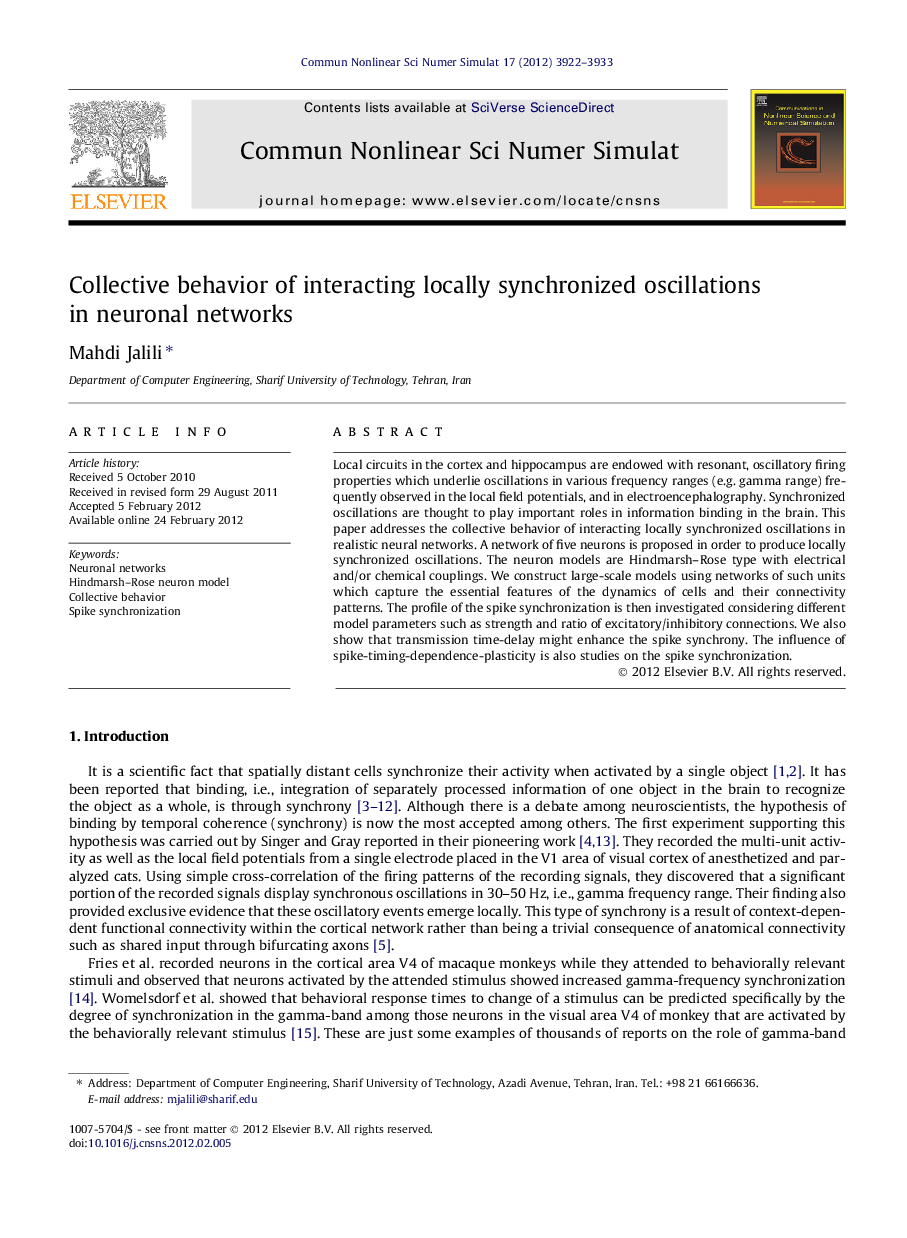| Article ID | Journal | Published Year | Pages | File Type |
|---|---|---|---|---|
| 758851 | Communications in Nonlinear Science and Numerical Simulation | 2012 | 12 Pages |
Local circuits in the cortex and hippocampus are endowed with resonant, oscillatory firing properties which underlie oscillations in various frequency ranges (e.g. gamma range) frequently observed in the local field potentials, and in electroencephalography. Synchronized oscillations are thought to play important roles in information binding in the brain. This paper addresses the collective behavior of interacting locally synchronized oscillations in realistic neural networks. A network of five neurons is proposed in order to produce locally synchronized oscillations. The neuron models are Hindmarsh–Rose type with electrical and/or chemical couplings. We construct large-scale models using networks of such units which capture the essential features of the dynamics of cells and their connectivity patterns. The profile of the spike synchronization is then investigated considering different model parameters such as strength and ratio of excitatory/inhibitory connections. We also show that transmission time-delay might enhance the spike synchrony. The influence of spike-timing-dependence-plasticity is also studies on the spike synchronization.
► A network with a five interconnected neurons is enable of producing synchronized gamma oscillations. ► Network parameters such as the proportion of inhibitory/excitatory connections influence synchronizability of the network. ► Transmission time-delay may enhance the synchronizability.
